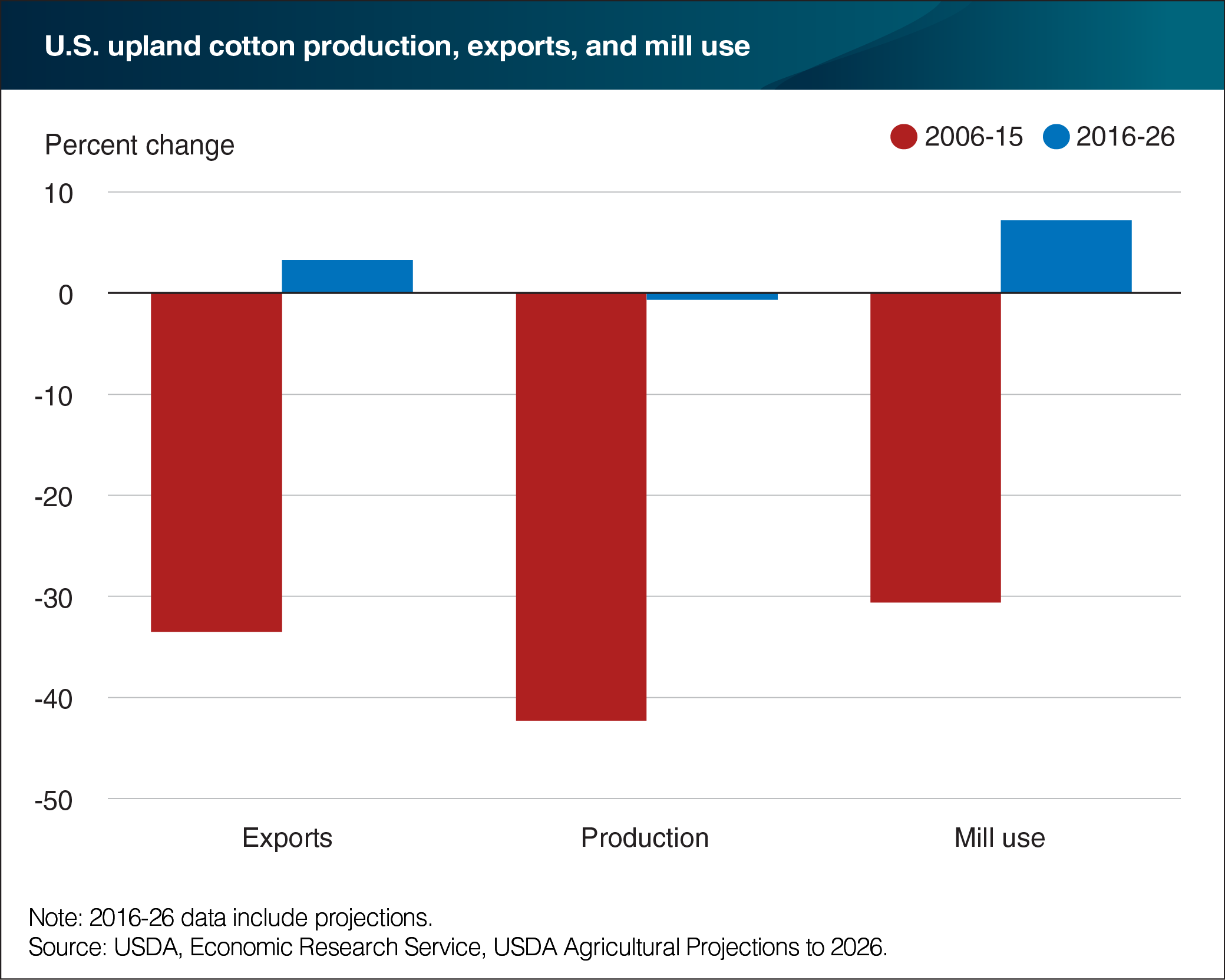U.S. upland cotton production, exports, and mill use is projected to stabilize following significant contractions in the past
- by Flavius Badau
- 8/10/2017

From 2006 to 2015, upland cotton exports decreased by 34 percent, production by 42 percent, and mill use by 31 percent. Key factors that drove these shifts include: increased competition from foreign suppliers, prolonged droughts that lowered production, lower import demand from China, and competition from synthetic fibers (such as polyester). While many factors limited cotton market opportunities through 2015, USDA baseline projections through 2026, which provide a long run view of the U.S. farm sector, nonetheless indicate that exports of U.S. upland cotton and mill use are expected to increase relative to the 2006-15 time period. Between 2016 and 2026, U.S. upland cotton exports and mill use are projected to rise by 3 and 7 percent, respectively, while production is expected to drop by less than 1 percent (stocks are also projected to decrease over this period). The major factors expected to drive this change are increased global demand from rising incomes and populations and the cotton crop’s reputation of superior quality relative to its competitors. This chart appears in the Amber Waves article, "U.S. Upland Cotton Exports and Mill Use Projected To Improve," released in August 2017.


